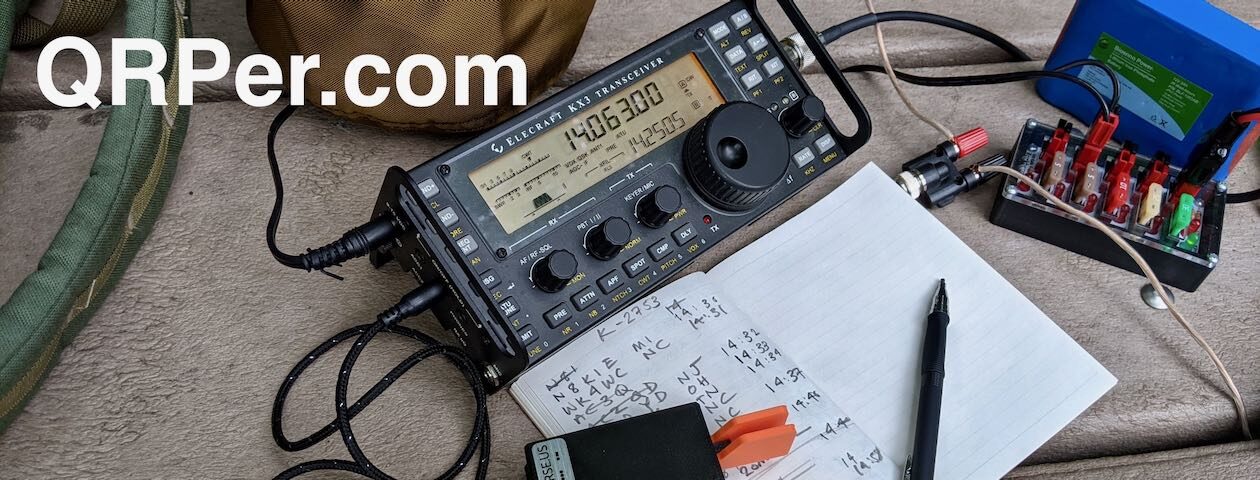Editor note – Please enjoy this guest post from Conrad Troutmann N2YCH.
Thank you “deputy” Vince, VE6LK, for assisting in managing some guest contributor posts for QRPer.com. I’m so happy to hear Thomas and his family rode the storm out safely and send him my best wishes and hope things return to normal soon. Here’s my contribution to help keep QRPer.com going while Thomas gets his house back in order. 73, Conrad, N2YCH
September 22, 2024
Lately, the high frequency bands (15/12/10 meters) have been hit or miss, largely due to recent space weather events. Today, taking a look at WSPR beacon reception at my QTH on the Top Spotters web site, I noticed that 10 meters was open and I was spotting quite a few stations on the band.

The weather here was sunny and beautiful and my batteries were all charged up, so it seemed like all signs were pointing to a POTA activation at Silver Sands State Park, US-1716. I usually activate on 20 meters, however with 10 open, I thought I’d try for some DX and give hunters that don’t normally hear me on 20 a chance to get the park. When I was trying for my Worked All States POTA award, I appreciated it when the Hawaii and Alaska activators activated on the higher bands so I had a chance to get them all the way from the East Coast. I like to return the favor when I can.
I decided to give my Elecraft KX2 a workout as well. Paired with my Buddipole vertical up 10’, I figured I would do well.


I got set up, checked and adjusted my computer time using JTSync and started calling CQ POTA on FT8. I called and called and no one answered. I checked PSKReporter and I was being spotted, but still, no answers. I was receiving well, in fact, I was picking up stations as far away as South Africa. “Hello, is this thing working? Can you hear me now?”
Just to be sure my equipment was working, I shifted to “hunt and pounce” mode. Rather than call CQ, I started answering stations who were calling CQ. It’s not my preferred way to get the QSO’s needed to officially activate the park, but sometimes that’s what you need to do. I have JTAlert set to sort received stations from strongest received signals to weakest. I’ve found based on prior experience that my chances of completing a QSO are much higher with stations that I’m receiving with strong signals. So, I answered a CQ for a station in Texas coming in at +19 and he answered right away. One in the log.
I did this for the next 30 minutes or so and managed to get six stations, about half I called and the other half answered my CQ. I moved around the waterfall looking for openings, but it was busy and challenging. Just for grins, I decided to see if FT4 was active. Sure enough, I was receiving many stations there as well. I called CQ and immediately had stations answering. I did the rest of the activation on FT4 and had a steady stream of callers. I completed the activation with 17 total QSO’s, my map is below. I make these maps using the Adventure Radio log analyzer. You can import the same log you upload to the POTA page and put the grid square in and it generates the map.

Interestingly, all of the USA contacts were on FT8 and when I moved to FT4, I picked up all of the EU ones. I was happy to see after I uploaded my log to the POTA site that almost all of the hunters who got me were active POTA hunters and had accounts at the POTA web site. In fact, one was actually a park-to-park QSO. PA4PA was at the Sluiswaai Nature Reserve, NL-0219 in the Netherlands.
Equipment I used for this activation included:
- Elecraft KX2 Transceiver with CIV and audio cables
- 12V 3Ah LiFePO4 Battery – Bioenno Power BLF-1203AB
- “Samsung Galaxy Book Flex2 Alpha 2 in 1” Laptop with Outdoor mode
- Sabrent USB external sound card adapter
- Buddipole Tripod with telescoping mast and Versa T in Buddipole case
- Buddipole Long Telescopic Whip adjusted for 10 meters
- Buddipole 50’ RF coax and choke balun
- 15’ home-made counterpoise wire
- Home Depot 3’ electric fence post to suspend the counterpoise
Mission accomplished!
73 de N2YCH




















